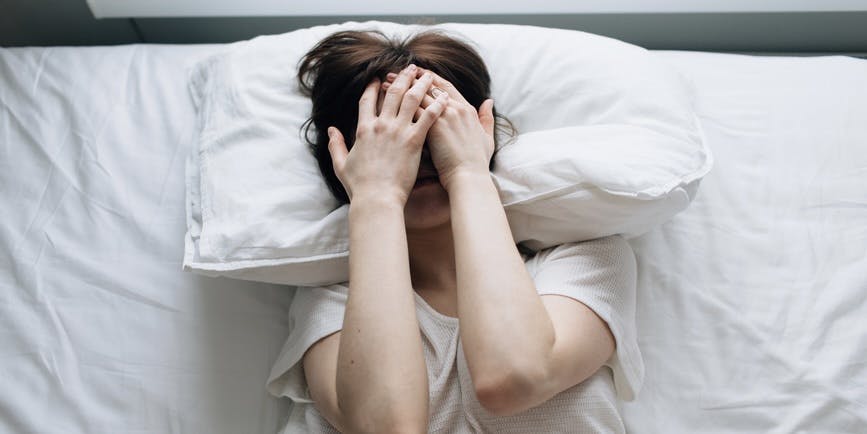
6 tips for how to prevent bacterial vaginosis (BV)

Key Points:
- Bacterial vaginosis is caused by an imbalance of good and bad bacteria in the vagina. This imbalance can occur after any activity that disrupts the natural balance of bacteria like douching or having unprotected sex.
- Researchers l aren’t sure what causes the imbalance in bacteria. So it’s not possible to prevent BV in all cases. But practicing safe sex and using healthy hygiene practices can reduce the risk of developing BV.
- Bacterial vaginosis is treated with antibiotics. BV treatment is more likely to be successful if also combined with safe sex and good hygiene.
Do you know what’s better than an effective treatment for bacterial vaginosis (BV)? Preventing BV altogether!
Bacterial vaginosis is the most common vaginal infection in people with vaginas between the ages of 15-44. And while BV is very common and treatable, it’s no fun at all.
Here’s how to prevent BV in the first place. And how to prevent BV from coming back!
What causes bacterial vaginosis?
Bacterial vaginosis is caused by an imbalance of good and bad bacteria in the vagina. When there aren’t enough good bacteria in the vagina, other harmful bacteria have room to grow and spread. The type of bacteria that helps keep vaginas healthy is called Lactobacillus.
Bacterial vaginosis occurs when there aren’t enough Lactobacillus and too much of another type of bacteria called anaerobes. The type of bacteria that usually causes BV is called Gardnerella vaginalis.
How to prevent bacterial vaginosis infections
BV can develop whenever something disrupts the balance of bacteria in the vagina. Research shows that BV is more likely in people who are sexually active. But BV can happen to anyone with a vagina.
Bacterial vaginosis is also linked to:
- People assigned female at birth (AFAB) who have sex with other AFAB people
- People with multiple sex partners
- Having a new sex partner
- Douching or using irritating vaginal products
- Having unprotected sex
While it’s not possible to prevent BV in all cases, you can take steps to make BV less likely.
6 tips for how to prevent bacterial vaginosis infections
BV is not a sexually transmitted infection. It does not spread in pools, hot tubs or shared bedding. You can't get BV from using the same toilet seat as someone who has BV. You also can’t get BV from touching the same surface as someone who has BV.
But you can prevent BV by avoiding or limiting activities that can disrupt the balance of bacteria in the vagina.
- Do not douche or use other products that could irritate the vagina, including deodorants, harsh soaps or scented tampons.
- Practice good hygiene by always wiping your genital area thoroughly after using the bathroom. Wash sex toys after using them.
- Limit sex partners, since BV is more common in people who have multiple sex partners.
- Practice safe sex. Latex condoms or dental dams can keep harmful bacteria out of the vagina. It can also help preserve a normal pH level since semen is alkaline and can raise the pH of the vagina. A higher pH makes it easier for some bacteria to grow.
- Choose cotton underwear. Cotton can help wick away moisture that may lead to bacterial growth.
- If you smoke, consider quitting or cutting back. Smoking affects the immune system and is linked to an increased risk of bacterial vaginosis. It also raises the risk of other infections like trichomonas, herpes simplex virus type 2 (HSV-2) and chlamydia.
Keep clean to prevent BV
Remember, vaginas aren’t meant to be odor-free. Healthy vaginas smell! And you don’t need any special cleansing products to keep your vagina clean.
The vagina keeps itself clean through normal secretions. Harsh soaps and douching can actually make BV more likely. Even washing the vagina with plain water can make it harder for good bacteria in your vagina to protect against harmful germs.
To promote vaginal health, skip the drugstore aisle full of sprays, deodorants and special soaps. These products aren’t necessary or helpful in preventing BV.
Instead, wash the vulva (the outer part of the genital area) with plain water during routine bathing. Mild and unscented soap without added colors are also okay. This routine won’t cure BV at home. But it will promote a healthy balance of vaginal flora.
Can probiotics prevent bacterial vaginosis?
Probiotics from supplements and fermented foods that contain Lactobacillus might help prevent and treat bacterial vaginosis. But research in this area of treatment options has shown mixed results.
Some research shows that using probiotics for BV may help when combined with a course of antibiotics. This is especially promising in people who have repeat cases of BV. However, it’s not known how much or which type of probiotics work best.
If you’re interested in probiotic supplements, be sure to talk to your medical provider first. They can help you find a good brand that contains the right strains of bacteria for your health goals.
Online treatment for BV
Several effective BV prescription antibiotics treat BV.
Some bacterial vaginosis treatments medications are put directly into the vagina. Oral options—like BV pills and granules—are swallowed.
People who deal with recurrent cases may need repeat treatment with antibiotics. Effective treatment for BV should also be combined with safe sex and good hygiene practices.
Symptoms of bacterial vaginosis include a watery discharge, thin white discharge or vaginal discharge that looks gray or greenish, a strong vaginal smell including a fishy vaginal odor, vaginal irritation or itching and burning with urination. If you have any of these symptoms, you might have BV.
You can access bacterial vaginosis treatment online—discreetly and conveniently—through Dr. B. Start a virtual health assessment. We’ll connect you with a licensed medical provider to discuss BV medicine options. If they find a bacterial vaginosis prescription appropriate for you, they’ll call it into your pharmacy of choice.
Sources:
Abou Chacra, L., et al. (2022). Bacterial vaginosis: what do we currently know?. Frontiers in Cellular and Infection Microbiology.
Bautista, C.T., et al. (2016). Bacterial vaginosis: a synthesis of the literature on etiology, prevalence, risk factors, and relationship with chlamydia and gonorrhea infections. Military Medical Research.
Centers for Disease Control and Prevention. (2022). Bacterial vaginosis - CDC basic fact sheet.
Chen, R., et al. (2022). Probiotics are a good choice for the treatment of bacterial vaginosis: a meta-analysis of randomized controlled trial. Reproductive Health.
Goje, O. (2021). Bacterial vaginosis (BV) - gynecology and obstetrics. Merck Manuals Professional Edition.
Joseph, R. J., et al. (2021). Finding a balance in the vaginal microbiome: how do we treat and prevent the occurrence of bacterial vaginosis?. Antibiotics.
Koumans, E.H., et al. (2007). The prevalence of bacterial vaginosis in the United States, 2001-2004; associations with symptoms, sexual behaviors, and reproductive health. Sexually Transmitted Diseases.
Leitich, H., et al. (2003). Bacterial vaginosis as a risk factor for preterm delivery: a meta-analysis. American Journal of Obstetrics and Gynecology.
Nelson, T. M., et al. (2018). Cigarette smoking is associated with an altered vaginal tract metabolomic profile. Scientific Reports.
Planned Parenthood. What is bacterial vaginosis? Symptoms, signs and causes.
Ravel, J., et al. (2021). Bacterial vaginosis and its association with infertility, endometritis, and pelvic inflammatory disease. American Journal of Obstetrics and Gynecology.
Surapaneni, S., et al. (2021). Recurrent bacterial vaginosis: an unmet therapeutic challenge. Experience with a combination pharmacotherapy long-term suppressive regimen. Sexually Transmitted Diseases.
Webb, L. (2021). Probiotics for preventing recurrent bacterial vaginosis. Journal of the American Academy of PAs.
Sign up for the free Dr. B newsletter for a weekly report on the latest in healthcare + research-based advice for staying healthy and mentally well.
Related articles







